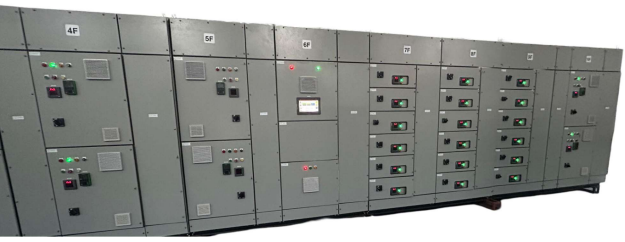

iMCC (Intelligent Motor Control Center) Panel
An iMCC incorporates intelligent devices like PLCs, relays, and drives to remotely monitor and control multiple motors. It communicates over a network instead of requiring extensive wiring. This makes iMCCs easier to maintain, expand, and provide richer motor information than traditional MCCs which require separate control panels and have limited monitoring capabilities.
Communication with PLC is achieved through various communication protocols like Modbus/ Profibus/ Device net. Warnings, Alarms and Measurement data acquired from Intelligent devices is displayed on local HMI or SCADA. For remote operations of motors from plant DCS, iMCC communication is offered through Ethernet Profibus or Modbus TCP/IP
Our HMI Solution

1. Data Visualization through the HMI screen
The HMI screen displays essential information in a clear and understandable manner for the operator. Through graphics, diagrams, indicators, and visual alarms, the HMI provides a visual representation of data and the system’s status, facilitating real-time decision-making.
2. Control and Operation
The HMI enables the operator to interact with the system and control its functioning. Through buttons, virtual switches, sliders, and touchscreens, the user can start, stop, adjust parameters, and perform specific actions as per the process requirements.
3. Diagnosis and Maintenance
In addition to everyday operation, the HMI facilitates problem identification and resolution in case of failures or errors. It provides diagnostic tools, event logs, and alarms, allowing technicians to efficiently detect and resolve issues. Moreover, the HMI screen can also grant access to user manuals and relevant technical documentation
Benefits Of iMCC Panels:
- Improved process efficiency.
- Reduced space, commissioning and start up time.
- Superior motor protection.
- Reduced unscheduled downtimes.
- Cost effective approach in reducing maintenance and saving time.
- Optimized productivity.
- Intelligent communication with PLC, DCS and BMS.
